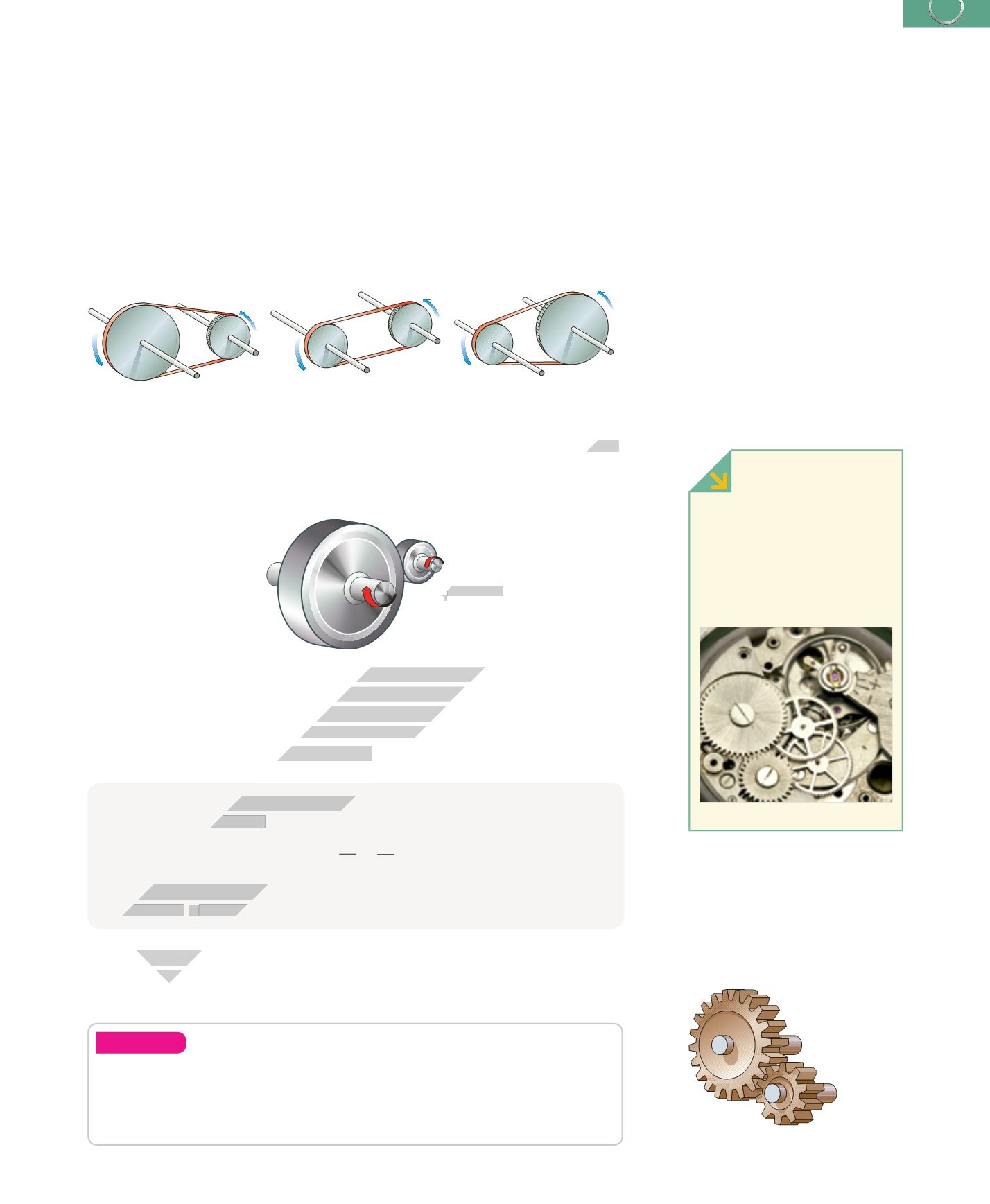
109
5. Mechanisms
www
3.1.
Changes in speed
If we want to increase the speed of a rotary system, we must transmit motion from
a larger (input) element to a smaller (output) element. However, when we increase
the speed we also decrease the rotary force, or torque.
The opposite is true if we want to decrease the speed of a rotary system. We must
transmit motion from a smaller (input) element to a larger (output) element. At the
same time, we also increase the torque. If the input and output elements are the
same size (with the same diameter or with the same number of gear teeth) the
rotary speed remains constant. The rotary force will also remain constant
15
.
Analyse
16.
Look at the gears on the right. How many teeth has each gear got?
If the bigger gear revolves at 15 rpm, how fast does the smaller gear
revolve? If the smaller gear revolves at 50 rpm, what is the speed of the
bigger gear?
The
relationship between the speeds
of the two wheels is inversely pro-
portional
16
to their sizes.
N
2
=
N
1
D
1
D
2
This relationship is called the ratio of transmission, where
N
is the speed of
rotation and
D
is the diameter of the wheel.
3.2.
Speed ratios
If we want to calculate the size ratio of wheels or pulleys, we can compare
their diameter, radius (
r
) or circumference. In the case of gears, we compare the
number of cogs or teeth (
Z
) that each gear has.
Increasing speed system
.
The input speed (
N
1
) is lower
than the output speed (
N
2
).
Constant speed system
.
The input speed (
N
1
) and
the output speed (
N
2
) are
equal.
Decreasing speed system
.
The input speed (
N
1
) is
higher than the output speed
(
N
2
).
Pulley 1
Pulley 2
D
1
>
D
2
N
2
>
N
1
Pulley 1
Pulley 2
D
1
=
D
2
N
2
=
N
1
Pulley 1
Pulley 2
D
1
<
D
2
N
2
<
N
1
Cylindrical gears
MECHANISMS
WITH GEARS
Gears are more reliable than
friction wheels because gears
don’t slip easily and they
can transmit more torque.
However, gears are noisier and
more expensive. They also need
lubrication
17
.
Gears inside a watch
15
constant
:
always the same
16
inversely proportional
:
corresponding
to the exact opposite
17
lubrication
:
using a substance to
reduce friction
D
2
= 10 mm
D
1
= 30 mm
In the mechanism above, the smaller wheel rotates more quickly than the larger
wheel. The difference in speed depends on the relative sizes of the wheels. If the
smaller wheel is three times smaller, it rotates three times faster. This happens
because the smaller wheel must rotate three times to cover the same linear distance
as the big wheel does in only one rotation.
ADVANCE EDITION


